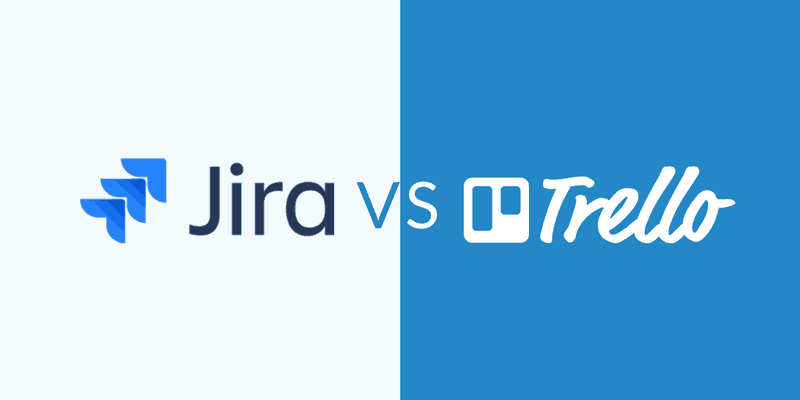B2B Connection
Information and resources for technology buyers
VoIP stands for Voice over Internet Protocol. VoIP is a technology that delivers voice over the Internet. It is also called IP Telephony, Internet Telephony, and Internet Calling. VoIP can be an affordable alternative to using a regular telephone line. Some VoIP services allow local, long-distance, or even international phone calls. VoIP technology converts your voice into a digital signal that travels across the internet. Before reaching the destination, VoIP translates this signal into a regular phone signal. This makes it possible for a VoIP user to contact a regular telephone user. Several software elements make up a VoIP solution. Most VoIP products include user interface software. This software lets users manage system hardware and relays messages to the screen. All VoIP software requires standard networking components to operate. These include a TCP/IP network stack, DHCP client software, and the Domain Name System (DNS). You’ll also need a VoIP signaling protocol stack. The Session Initiation Protocol (SIP) is a popular open standard. H.323 is a good alternative for video conferencing. Common Use Cases for VoIP If you are looking to slash costs, switching to VoIP can be a a great way to save. VoIP service providers have lower operating costs […]
Mobile accessibility to your learning platform is a must-have, not a luxury. Professional skills, like communication and conflict resolution, are an increasingly robust content area often tailored to Gen Z. Microlearning isn’t new- figure out whether it’s useful to you before factoring it into your buying decision. Artificial Intelligence can be beneficial, but don’t get FOMO- ask vendors the hard questions to figure out how much it actually matters for you. If you’ve seen any “trends of 2019” articles, you’ve probably seen references to “microlearning,” “mobile-first,” and the all-present, inescapable “AI.” As 2020 approaches, which trends should you focus on, and which ones are smoke and mirrors? We had Cornerstone, a 20-year incumbent in corporate learning management, lend us their Content team to help us pull back the curtains on 4 of the most important trends for 2020. Here’s what each trend means to software buyers like you, and how it might influence how you buy and use learning management systems. 1. Mobile Accessibility Trend Status: Need to Have Mobile access to learning content is now a necessity in your platform. So what’s driving this trend? Doug Segers, Head of Original Content at Cornerstone OnDemand, argues that mobile accessibility emerges […]
The ability of VoIP technology to connect data, audio and visual elements all into one platform allows access to assistive and accessibility features that were not once achievable. With things like audio-to-text conversions and automated voicemail transcriptions, VoIP software has been supplying hearing impaired and deaf individuals with effective and essential communication tools for years. The VoIP software industry has proven to help provide Assistive and Accessible Technology for those with disabilities. The Hearing Aid Compatibility Act of 1988 (HAC Act) requires that all telephones manufactured in, or imported by, the U.S. for general use, and all “essential telephones”, must be hearing-aid compatible. Essential telephones are generally defined as coin-operated phones, phones made for emergency use and phones for those that require hearing-aids. In 2017, the FCC released an order that made modifications to hearing-aid compatibility and volume control requirements for wireless and wireline telephones. Through this order, the Twenty-First Century Communications and Video Accessibility Act was designed to ensure that all of the FCC’s hearing-aid requirements are applied to all “wireline telephones used with advanced communication services, including phones used with Voice-over-Internet-Protocol (VoIP) services.” With those revisions in place, all wireline telephones used with a VoIP service in the […]
As the skills necessary for employees to excel in their roles change more rapidly, businesses are realizing the importance of continued professional learning and development. To ensure their talent stays top-tier, organizations can turn to corporate learning management systems (LMS) to stay competitive. Corporate learning management systems (LMS) are platforms designed to help companies teach and train employees, customers, and/or partners. They can provide industry-agnostic technical and professional skills development, as well as serve specialized training and knowledge. If you want to help provide your employees with continued training and skills development, but don’t know how best to do so, we can help! If the 139 listed corporate LMS products and over 1600 reviews seem daunting, we’ve provided a topshelf breakdown of what the software is, what it can do, how it can help you, and how to begin evaluating and comparing products. Let’s not bury the lead: What can corporate LMS do for you? 5 benefits of corporate LMS #1 Cost Savings Continued training can be expensive. Flying employees and trainers to a centralized location, putting together an event, and possibly paying for a venue itself can be cost prohibitive. Corporate LMS software aims to mitigate these costs. While […]
I recently sat down to have a conversation with Jane Menyo and Tiffany Beddow, Senior Director of Solutions Marketing and Director of Customer Marketing at ON24 (a leading webinar software). We discussed what makes for the best webinar software, and what webinar trends are on the horizon for 2020. Despite the emergence of Unified-Communications-as-a-Service Platforms (UCaaS) which aim to consolidate every online communications tool into one, a majority of buyers actually enjoy having separate tools for web conferencing, webinar, and even VoIP. There are several reasons why buyers want to invest in a webinar-focused tool for their online events. Let’s dig in. Webinar Benefits Jane and Tiffany shared that one of the biggest benefits of webinar software is its demand generation capabilities. Using webinars for demand generation entails creating informative and engaging sessions that drive leads and accelerate them through their buyer’s journey. Leading webinar tools on the market will provide you with attendee analysis and reporting to analyze the performance of your webinar and its surrounding outreach campaigns. Remember that webinar software is ideal for larger group meetings or online events with wide audiences of up to hundreds or thousands of participants. Owing to this, webinars are typically much […]
Today’s community contributor is Zee Gimon, Digital Operations Manager at HUSPI Software Development. She loves to learn about new technologies and advances in the sciences, cook Chinese and Mexican food, and read Harry Potter to her kids. Check out the detailed reviews she’s written on TrustRadius about tools with which she has worked throughout her career. Whether you have one project or several going on, a project management tool is always useful to have. In my work as a Digital Operations Manager in the IT industry, I use two major ones for our internal as well as external projects: Jira and Trello. In this article, I’ll talk about the differences in their approaches and where each tool fits in the landscape of project management software. Jira Just a heads up, both Jira, and Trello belong to the company called Atlassian. While Atlassian acquired Trello, Jira has been their creation from the start. Because one of my direct responsibilities is working with updating our website feature-wise, we have used Jira for this purpose because all our developers are used to the interface, workflow, and time tracking. 5 things I like about Jira Workflow management In software development, as well as in […]
VoIP, or Voice over Internet Protocol, is a cost-effective tool that delivers voice, and other forms of online communication, over an Internet Protocol or IP. VoIP allows users to manage all of their call-related communications (e.g. voice calling, instant messaging, online faxing, voicemail) within one platform via internet connection. Choosing the right VoIP system can be a confusing and stress-inducing task. From the abundance of available products to consider, to attempting to truly differentiate between products, to trying to figure out which products are better suited for micro businesses, small businesses, midsize businesses, and/or enterprises, choosing which VoIP solution is best for your company can be overwhelming. VoIP technology is a powerful tool that small businesses should take advantage of due to its cost effective, easy to use, and customizable features. Here are TrustRadius’ top 5 VoIP products for SMBs, listed in order of the TRScore. Jive Hosted VoIP From LogMeIn, Jive Hosted VoIP is a cloud-based phone system for business operations. It supplies web-based video conferencing, call recording and analytics, fax and voicemail to email capabilities, softphone, etc. Customers can customize their phone system through Jive’s suite of over 80 hosted VoIP features, including one-step scheduling, tailored time-based call […]
As one of the largest and most popular tech companies in the world, Google products, which are often offered at no cost to personal users, are also among the most popular in their various software categories. In the Voice-over-Internet-Protocol (VoIP) space, Google offers two different products: Google Voice and Google Hangouts. While these two products are very similar, they provide users with different capabilities and features. These features also vary based on whether they’re being used for “personal” use or for businesses. Below, I’ll dive into the best use cases for both products and share a bit of my experience using both for personal and business use. Google Voice Google Voice provides users with “smart” voice calling across PC and mobile devices (Android and iOS). One of its key selling points is that it can assign users with a personalized phone number that they can sync with their personal devices. This phone number can be used for both incoming and outgoing calls, and receiving and sending text messages. My favorite aspect of using Google Voice is the control over your privacy that it provides. It allows you to use your personal devices for business, while protecting your actual number (and […]
Our future as we know it not only should be accessible, but will be accessible. Humanity will not make gains without investing in the development and improvement of tools that provide users with disabilities to fully utilize them. According to the U.S. Census Bureau, employees with disabilities make up 6% of the American labor force. As a millennial with disabilities working in tech, I spend a lot of time thinking about how the software I use at work every day could be improved for my peers and I. I am extremely interested in adaptive and assistive technology, and how everyone, including able-bodied folks, can benefit from them. As web conferencing and video calls become more commonplace, perhaps even more so than standard phone calls, web conferencing tools must rise to the occasion of meeting the needs of users with various disabilities. Whether people are web conferencing from their desktop computers or mobile phones, accessibility is of utmost importance. In this blog post, we’ll explore the basic requirements web conferencing software should meet for basic accessibility. Accessibility features your web conferencing tool should have One of the biggest selling points of web conferencing is that it allows users to communicate online and […]
Maybe you’re looking into VoIP software to use as a personal, private business number. Or maybe you’re evaluating different VoIP providers because you need a cheaper way for your sales reps to contact prospects. Even still, maybe you need a voice solution that can also provide your team with an online meeting and messaging capabilities (check out this post about VoIP and UCaaS platforms if you do). Or maybe you already have a VoIP service, but want to make sure you’re taking full advantage of all it has to offer. Either way, understanding all the different ways you can use your voice solution will help ensure that you’re not underutilizing the software. In a recent survey of over 200 VoIP users, we asked respondents how they’re using different products to get a better picture of what the most popular VoIP use cases are. We also put together a table of the top rated products for the 3 main ways businesses use VoIP technology: voice calls, video calls, and instant messaging. 5 Main VoIP Use Cases The majority of businesses (64%) use VoIP technology not just for making calls, but also for either online meetings or messaging. While many vendors also […]
Today’s Community Contributor is Peter Cartier, a marketing and business strategist based out of St. Louis, MO who relies on creative problem solving and informed content to deliver the “what’s in it for me” solution his customers are looking for. He is currently the Marketing & Business Development Manager for an events agency in Downtown STL, as well as the hardest working (and only) employee of his side hustle, St. Louis Copywriters. What does minimum viable product mean and why should you care? A minimum viable product (MVP) is a solution that has just enough features to be dangerous, yet gives ample room for growth as you gather feedback from your customers that will help shape the final deliverable. It essentially helps you navigate the build/measure/learn loop more quickly and efficiently, and it’s how brands like Uber, Zappos, and Dropbox got big. When do you create a minimum viable product? The hardest part of getting started is… well, getting started. When it comes to accomplishing your next big business initiative, so many great ideas and products never make it off the starting block. Too often, we’re bogged down by the details of what level of polish is necessary to launch, […]
The marketers of the world deserve a round of applause because they have (on too many occasions) successfully convinced me that I absolutely need to have something. Whether it’s the newest iPhone upgrade, hand soap at Lush that smells like vanilla shea butter heaven, or sleek new waterproof hiking gear from REI; I’m guilty of buying them without truly needing them. All of these things, while fun to have, are ultimately unnecessary—aka I won’t die without them. But it can be hard to convince yourself of that when you’re in the moment and about to make a purchase. In my experience, consumer marketing teams have done an excellent job persuading people that a product will make their life better. Marketers of the tech world put just as much energy and creativity into selling their products as marketers for consumer-facing brands. And it can be hard for businesses and the people on buying committees to sift through the marketing materials and jargon to figure out if their business actually needs to purchase a new piece of technology. This article goes over 5 tell-tale signs that your business is ready for a modern business phone system in plain (non-market-y) language. VoIP (voice […]
Web conferences should support collaboration, so you’ll want to be able to share your screen, for example. They also connect you with people outside your organization. You may want to be able to meet with clients overseas “face-to-face”. If that’s the case, the last thing you want is to have to deal with a spotty connection, or low quality video. Stream to win esteem, if you will! Key Features of Web Conferencing Software High-Quality Audio & Video For 58% of web conferencing users, audio & video quality is in their top 3 most important features Audio and video quality is of the utmost importance to web conferencing software. Users want to feel like they’re having authentic face-to-face conversations with other participants, and quality video is a major component of that. A lag in video conferencing as well as blurry images and crackly audio is a sure-fire way to make any online meeting go south. Beyond the quality of your webcam or microphone, the software itself can feature tools that enhance the overall quality of your experience such as noise cancellation, auto-mute for non-speaking participants, and settings adjustments for users with low bandwidth. Screen Sharing 67% of users consider screen sharing […]
Nothing’s worse than getting all excited about buying a new gadget or another piece of tech, only to be met with a never-ending stream of confusing acronyms when you start researching your options! In the world of B2B software buying, this is a frustratingly frequent reality. But don’t worry, we’ve done the preliminary research for you and come up with a list of 8 need-to-know VoIP terms. Curious about what the difference is between fixed vs. non-fixed VoIP numbers, or when to use a PBX phone vs. VoIP Softphone? Check out the list below for a primer on all things VoIP, a little bit of IP telephony trivia (did you know that the PSTN has been around since the 1800s?!?), and some quick tip about which type of VoIP software is best suited for specific use cases. 8 VoIP Terms to Know Before You Start Researching #1 VoIP The most important term to know is VoIP! This stands for Voice Over Internet Protocol, and is a means of transmitting voice traffic via the internet, rather than using landlines or cellular phones. Businesses have multiple options when it comes to using and setting up VoIP technology. Users can connect to a […]
Phone calls and emails have been the two main business communication methods for decades. But companies are increasingly using other technology, like video conferencing and instant messaging applications, to help serve their daily communications needs. Voice communication, using either traditional private branch exchange (PBX) telephones or VoIP technology, and business email aren’t going anywhere. But the use of other types of digital communication software is expanding. For enterprise companies using multiple types of communication software, consolidating all their communication technology under one platform may be the best move. But for smaller businesses only using one or two of these applications, transitioning to a unified communications as a service (UCaaS) platform may be overwhelming and too expensive for their organization. Is VoIP being swallowed by UCaaS? The short answer to the question ‘is VoIP being swallowed by UCaaS’ is no. But the larger story does involve the integration of the two. VoIP technology, which allows users to make voice calls over the internet rather than using traditional PBX phone systems or cellular data, is part of the underlying technology supporting UCaaS platforms. UCaaS platforms typically encompass four main capability areas: Voice/VoIP Meeting solutions (including audio and video conferencing) Team collaboration (e.g. […]
Marketers have a ton of digital tools at their disposal. But when those tools don’t automatically work with each other, it can feel like you are taking steps sideways for every step forward. “From our own proprietary CRM, to our B2C email database to our B2B marketing automation platform, to event marketing software, our tech stack is fairly fragmented,” explains one TrustRadius user, a Director of Marketing. This fragmentation can create large gaps in customer information and communication when left unaddressed. That’s where iPaaS software comes in. iPaaS solutions enable marketers to get all their separate tools — no matter the environment — to work together seamlessly. iPaaS products like Zapier and IFTTT let you set sequences for triggers in one application and resulting actions in a different application. “Zapier is a great product if you have a fragmented tech stack like ours. Most marketing teams have multiple software tools that get customer information. Zapier is a great tool for connecting those without using developer resources,” further explains the same user. Along with Zapier, many TrustRadius users explore how IFTTT can reduce divisions in their stack. These two products support marketers to automate their workflows, streamline their data, and receive […]
Everyone wants to make sure they’re getting the best deal, value for their money, and overall highest quality experience. I’m no exception to this – I won’t check out a new restaurant or go see a movie before reading reviews online first! The drive to vet our options fully before making a decision is alive and well for consumers and business buyers alike. And software review sites have made it possible for technology buyers to access high quality, detailed customer feedback about almost all types of software. Think TripAdvisor or Yelp reviews, but for your ERP, content marketing software, or cloud-based business phone system. While the democratization of reviews is definitely a good thing, it also creates some unexpected problems. Most notably: There are now HUNDREDS of reviews for you and your coworkers to read through. There are also HUNDREDS of different products available for you to choose from. Given the sheer amount of information out there, it can be hard to make sense of it all and figure out where to start. Even if you’ve managed to whittle the list of VoIP products you’re considering down to 5 or fewer options, coming up with a list of the most […]
Today’s Community Contributor is Chris Hecox , owner of Lucky Whisker, a video production company specializing in post production and animation. He has over six years of video production experience and has written many in-depth reviews of video production tools and business software on TrustRadius. After Effects can be fairly simple. It can also be a deep dive into a varied web of choices, algorithms, and numbers. When greenhorn animators start fresh with After Effects, options might initially seem limited to simple effects like greenscreen keying or adding ease in/out to naturally animate 2D text. However, after watching Andrew Kramer or countless scores of YouTubers, eyes widen as the world opens up into scripts, precomps, pickwhips, fractal patterns, and of course: third-party plugins. I’m not a genius, and learning to write scripts and expressions seems out of easy reach for me. The longer I’ve animated, the more I’ve called my animator friends and said, “I keep running into this issue while animating. How would you tackle this problem?” Thankfully, there are so many talented thinkers out there who are ten steps ahead of me. They’ve developed hundreds of time-saving plugins and After Effects UI tools that have increased my productivity […]
From Facetime to Instagram Stories, people love communicating visually with one another, no matter how far apart they may be. Owing to this, the market for web conferencing has steadily grown over the years and is expected to reach $3.9 billion by 2020. Recently while travelling, I noticed large—and extremely engaging—advertisements for Zoom and GoToMeeting in particular. This really caught my eye, because while advertisements for food and beverage, and even entertainment like video games are nothing worthy of note, it pleasantly surprised me that web conferencing is becoming so important worldwide that web conferencing vendors are advertising in offline, public spaces. This means that more and more people are getting hyped about web conferencing software and are looking for the particular product that is right for their organization. And they rightly should. It makes meeting and collaborating with teammates from around the world easier than ever. And with work-life balance being more important in the workplace than ever, it let’s employees gain some flexibility in from where they work. We’ve created a Buyer’s Guide to Web Conferencing Solutions as a free tool to help you evaluate different products and compare 7 comprehensive products. Looking for more resources to use […]
Today’s Community Contributor is Michael McKeown, a project manager for Colantonio Inc., a General Contractor and Construction Manager located in Holliston Massachusetts, located about 25 miles west of Boston. Here, he is comparing Procore with Newform and Submittal Exchange. He has been with Colantonio since 2001 and has used all three programs during his career. Check out some of the great reviews Michael has written about other software he’s used here. Presently our primary Construction Management Software we use is Procore, using it on all our projects for the last four years. We have previously used Submittal Exchange as a program as well for numerous projects. We have used Newforma on a few projects, only when required by the Architect and the Client, and when we use Newforma, we use it in conjunction with Procore. I like Procore as a complete Construction Project Management Software for all aspects of a construction project. As a company, we use Procore for all our projects because it works excellently for our PMs, APMs, and Superintendents and we can easily add the Architect, Consultants, Owners, and more importantly Subcontractors. We use Procore to upload all the Plans, Specifications and Addenda for the project available […]





















